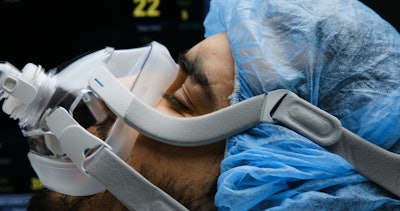
This content was written and submitted by the supplier. It has only been modified to comply with this publication’s space and style.
Today’s manufacturing facilities are not able to adapt to major changes in supply and demand and cannot handle a complete reconfiguration to produce new products. This is a considerable issue when it comes to trying to fill the demand for ventilators to treat the more than 8 million COVID-19 patients in the world today. Researchers from the University of Southern Denmark (SDU) and the University of Cambridge contend that collaborative robots (cobots) could be the answer to the problem.
“We have seen that clearly during this pandemic, where companies who usually deal in other industries have had to produce PPE or ventilators,” says Ali Ahmad Malik, a researcher at USD. “Cobots and flexible automation solutions can handle these challenges.”
Along with Tariq Masood and Rehana Kousar from the University of Cambridge, Malik has published an article in Science Robotics that asks the question, “Can cobots further the manufacturing of ventilators?” The short answer is yes, and the researchers suggest using cobots to do more of the work.
GlobalData estimates that there is a global shortage of 880,000 ventilators. The shortage is felt particularly on the African continent, where 10 countries do not have any ventilators at all. The World Health Organization (WHO) estimates that 41 African countries must share less than 2,000 functioning ventilators.
Governments all over the world have urged companies to change their production lines. Manufacturers from Rolls Royce to vacuum cleaner makers have stepped up to meet the rising demand for ventilators. But as the number of COVID-19 patients continues to rise, they are racing against time.
It is not an easy transition from manufacturing vacuums to ventilators, the SDU and Cambridge researchers note. “There are many steps involved, such as sourcing design, product information, upgrading production lines, and training workers so they are able to not just assemble but also test the ventilators,” Malik says. “This can take months. At the same time, it is difficult to meet the rising demand because production lines are made for mass production and thus lack flexibility.”
Very few manufacturers are equipped with the technical and human resources to meet the demands of the pandemic. The manufacturers also lack the expertise required to produce ventilators.
A place for cobots
The researchers point to cobots, which can work alongside human workers. These robots do not require a safety guard and are easy to program. They combine the flexibility of a human with the strength of a robot.
With cobots, manufacturers can move away from Henry Ford’s idea of the assembly line and instead focus on cell-based production, where humans and robots work alongside each other.
“COVID-19 is still raging, and we are 880,000 ventilators short,” the researchers write. “Cobots can handle half of the assembly work of a ventilator, so they can be very important. It will also be easy to change the production line from e.g. jet engines, cars or hoovers. As a bonus, cobots will make it easier to maintain the required social distance on the factory floor during the pandemic.”
To reorganize a manufacturing facility requires a great ability to adapt to new tasks and standards. A human-robot collaboration (HRC) system can do exactly that. The system also has the advantage of being very scalable, so capacity and functionality can be added as the demand for products increases. This means that an HRC system has all the flexibility that a traditional assembly line is lacking.
If the demand for a product changes, ready-to-deploy hardware modules can be added to the existing system—a strategy that is used in the military and healthcare service but is rare in the manufacturing industry where production lines are designed to last for 20 years. Like Legos, the HRC system can add blocks as the need arises.
It is also possible to implement a digital twin (a digital duplicate of a physical product) with the flexible HRC system. Production systems with human-robot collaboration can be complex, but digital twins can make the integration faster, reduce the programming need, and distribute tasks between humans and robots dynamically.
When combined with an HRC system, a digital twin could provide insights into the operational behavior, enabling the manufacturer to optimize processes before implementing them on the actual cobot. It is usually a costly affair to change a production line, but with a preceding simulation, manufacturers can make the correct change in the first attempt and avoid expensive adjustments afterwards.
Challenges
Cobots and digital twins can solve a lot of the problems that manufactures face in times of crisis such as the current pandemic, which requires both production lines and employees to be flexible and adaptable. However, there are still challenges, the researchers point out. A major concern is to ensure the safety of humans working right next to robots. That is why it is important for manufacturers and universities to collaborate on integrating robots as co-workers.
Historically, manufacturers have proven able to adjust their production in times of crisis—and even change the direction and produce new products. In turmoil, the companies find new ways to operate to stay afloat. And in the toughest of times, industry tends to see unusual results by using unconventional methods, which in turn leads to a new normal.
By using cobots during the COVID-19 crisis, manufacturers can gain experience that can potentially be a big leap toward implementing human-robot teams in future factories—factories that will be more resilient and better equipped to face a pandemic.





















